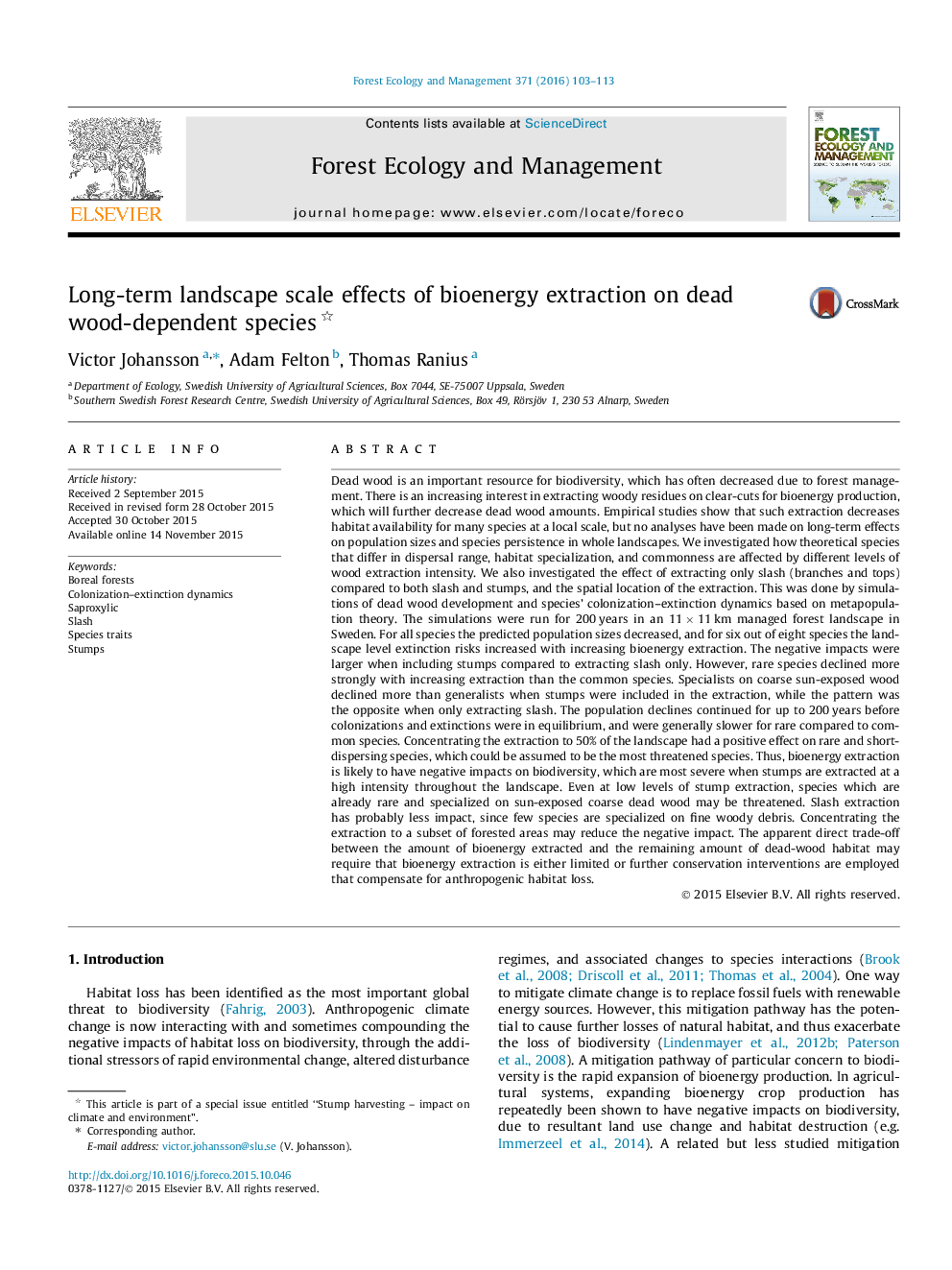| کد مقاله | کد نشریه | سال انتشار | مقاله انگلیسی | نسخه تمام متن |
|---|---|---|---|---|
| 85920 | 159149 | 2016 | 11 صفحه PDF | دانلود رایگان |
• We test how species with different traits respond to extraction of stumps and slash.
• Extracting stumps was worse for all species compared to only extracting slash.
• The negative impact was strongest for rare species with short dispersal range.
• Population changes were time-lagged up to 200 years.
• Concentrated extraction in the landscape was better than random extraction.
Dead wood is an important resource for biodiversity, which has often decreased due to forest management. There is an increasing interest in extracting woody residues on clear-cuts for bioenergy production, which will further decrease dead wood amounts. Empirical studies show that such extraction decreases habitat availability for many species at a local scale, but no analyses have been made on long-term effects on population sizes and species persistence in whole landscapes. We investigated how theoretical species that differ in dispersal range, habitat specialization, and commonness are affected by different levels of wood extraction intensity. We also investigated the effect of extracting only slash (branches and tops) compared to both slash and stumps, and the spatial location of the extraction. This was done by simulations of dead wood development and species’ colonization–extinction dynamics based on metapopulation theory. The simulations were run for 200 years in an 11 × 11 km managed forest landscape in Sweden. For all species the predicted population sizes decreased, and for six out of eight species the landscape level extinction risks increased with increasing bioenergy extraction. The negative impacts were larger when including stumps compared to extracting slash only. However, rare species declined more strongly with increasing extraction than the common species. Specialists on coarse sun-exposed wood declined more than generalists when stumps were included in the extraction, while the pattern was the opposite when only extracting slash. The population declines continued for up to 200 years before colonizations and extinctions were in equilibrium, and were generally slower for rare compared to common species. Concentrating the extraction to 50% of the landscape had a positive effect on rare and short-dispersing species, which could be assumed to be the most threatened species. Thus, bioenergy extraction is likely to have negative impacts on biodiversity, which are most severe when stumps are extracted at a high intensity throughout the landscape. Even at low levels of stump extraction, species which are already rare and specialized on sun-exposed coarse dead wood may be threatened. Slash extraction has probably less impact, since few species are specialized on fine woody debris. Concentrating the extraction to a subset of forested areas may reduce the negative impact. The apparent direct trade-off between the amount of bioenergy extracted and the remaining amount of dead-wood habitat may require that bioenergy extraction is either limited or further conservation interventions are employed that compensate for anthropogenic habitat loss.
Journal: Forest Ecology and Management - Volume 371, 1 July 2016, Pages 103–113
